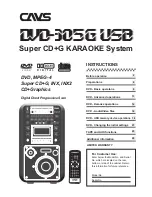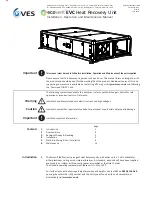
IR Mode
A feature of the camera that permits manual or automatic switching between color and IR
(black-and-white) operation. When IR mode is active, clearer images may be obtained under
low-light conditions.
Line Lock
Allows you to phase lock the video with the AC power line. When line lock is enabled, it prevents
vertical video rolling when switching multiple cameras to a single monitor. If text appears slightly
tinted on color monitors, disabling the line lock may prevent this problem.
Name Information
Relates to the display the dome name, the area where the dome is pointing, the name of the
preset or pattern that is running, and alarm names. The display of each type of name setting can
be enabled or disabled. When the display of camera or area title(name) is enabled, the
information appears on the screen continuously. Preset, tour and pattern titles(names) appear
only while they are active.
Normal Input State
Describes the expected state of a device connected to one of eight dome camera’s inputs. The
normal state may be open or closed. When a device is not in its normal input state, an alarm is
issued.
North Position
User-definable setting that may correspond to magnetic north or some well-known landmark.
Used to approximate the camera dome's pointing direction when Direction Indicators are enabled.
Slow Shutter
Setting used to improve the quality of video obtained in extreme low-light situations. When the
Low Shutter setting is enabled, low-light information is collected over multiple fields based on the
Shutter Limit setting. As a result, video may appear blurred or choppy in extreme low-light
situations. This setting does not effect camera operation in normal lighting situations.
Pattern
A series of pan, tilt, zoom and focus movements from a single programmable dome. Up to 8
patterns may be programmed for the dome camera.
Preset
Programmed video scene, based on a specific pan, tilt, zoom, and focus settings. Up to 240
presets may be programmed for the dome camera.
Privacy Zones
Masked areas of the dome camera's viewing area. These masks prevent operators of the
surveillance system from viewing these designated zones. The Privacy Zones move in relation to
the dome camera’s pan/tilt position. In addition, the apparent size of the Privacy Zone adjusts
automatically as the lens zooms in or out. Up to eight Privacy Zones may be established for a
dome camera.
61






































